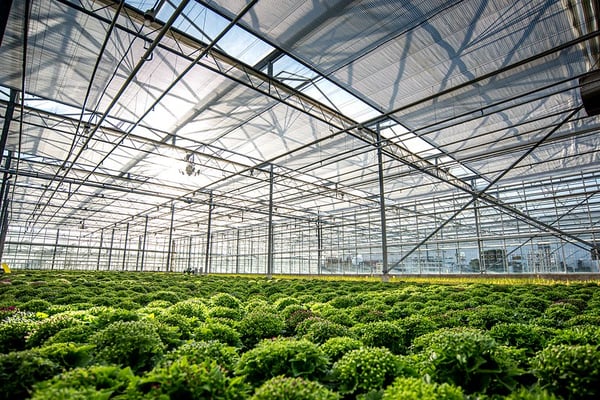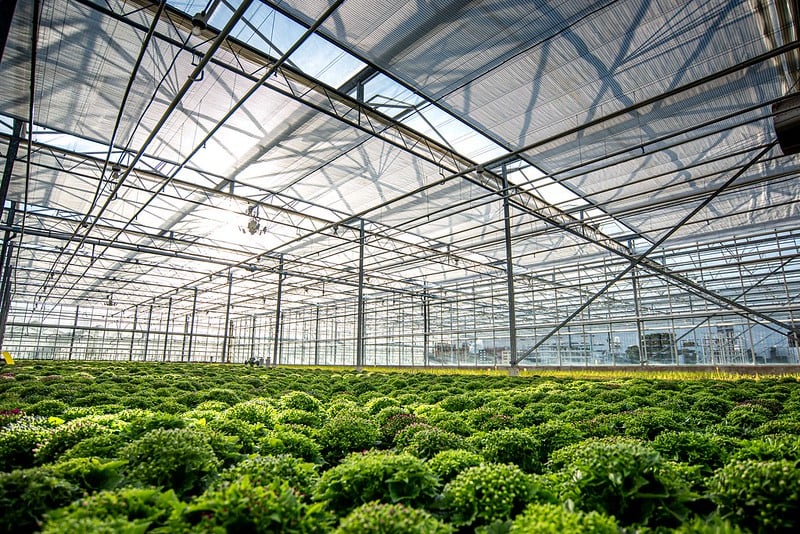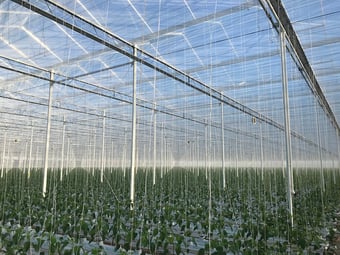Protecting your crop
While sunlight is essential for crop growth in excess it can result in damage to the crop. Many crops do not require direct sunlight and therefore receiving too much light will cause the crop to burn. Crop burning can then impact plant productivity, leading to reductions in crop yield. Since sunlight is often the primary light source in the greenhouse, strategies to prevent the crop from getting too much light are sometimes required. The need to reduce the amount of light a crop receives depends on a variety of factors from what crop is being grown to the typical weather patterns at the location and the time of year. So how do you ensure the crop is getting all the sunlight it needs while shielding it from excess light that can cause damage and ultimately reduce crop yield?
Climate screens – shielding excess light and improving crop yield and quality
One strategy to shield the crop from excess light and improve crop yield is to install sun shading screens. Preventing sun damage by shading the crop allows the plant to function under optimal conditions, enhancing crop efficiency. By preventing crop damage, the plant's energy and resources can be spent on crop growth rather than on repair of damaged tissue. Not only this but, providing optimal light levels can enhance the quality of the crop. Light has a tremendous impact on plant growth and providing optimal light conditions that optimize crop efficiency can also translate to superior nutrient profiles of the crop, ensuring crop quality.
Aside from the advantages that climate screens provide on crop yield and quality, they can also provide energy and cost-saving benefits. Sun shading screens contribute to a more consistent climate within the greenhouse. They work to maintain light conditions while helping to control temperature and regulate moisture. By improving climate control, fewer energy inputs are required to maintain ideal conditions. This leads to energy savings, which translates to reduced energy costs.

Ridder climate screens
Ridder sun shading climate screens can provide your greenhouse with a sophisticated solution to protect the crop from sun damage and improve crop yield and quality while saving energy. To find out which Ridder sun shading climate screen may be right for you, book a 1-on-1 consultation with a climate screen expert. We’ll get to know a little about your greenhouse operation and provide solutions that will help you achieve an optimum growing climate.




